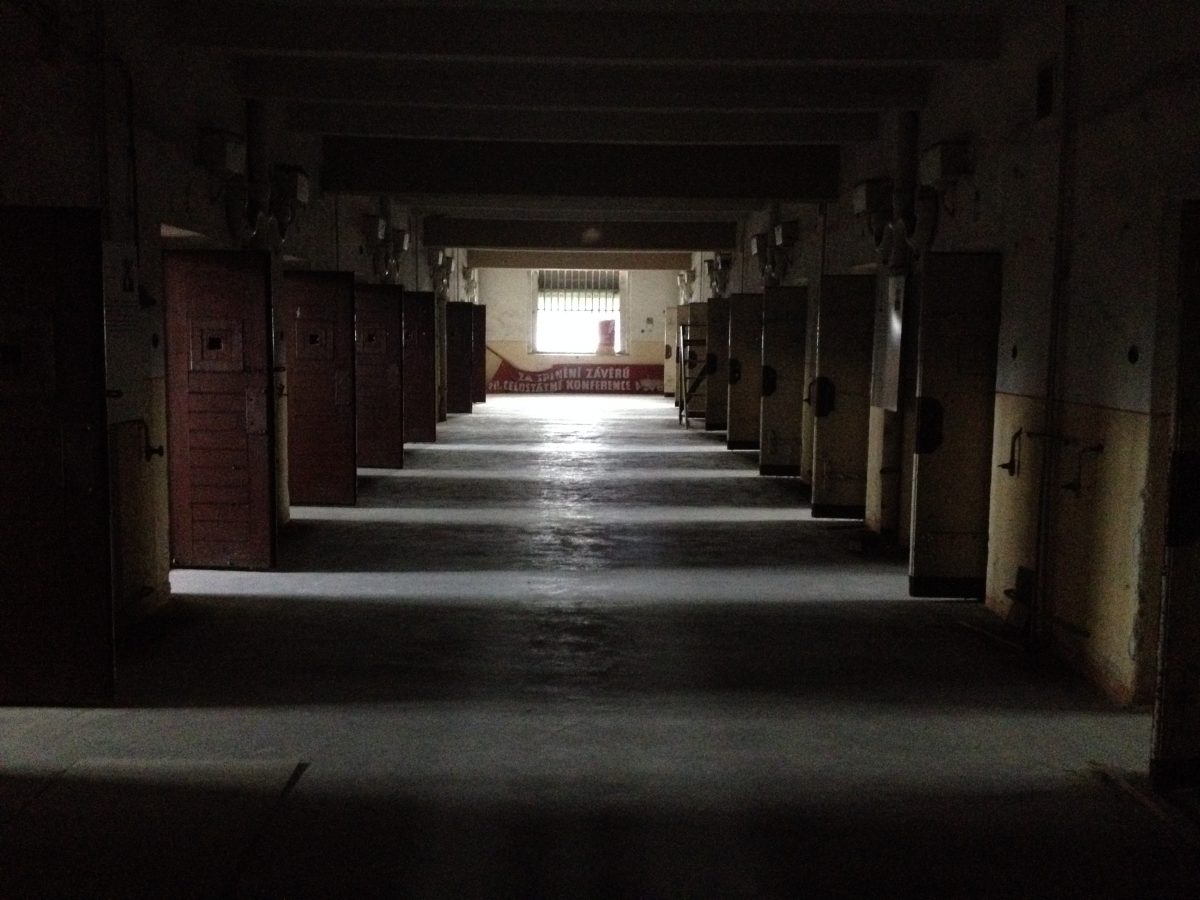The first day in the prison it’s cold, dark, dank, there is no electricity, many of the windows are broken or open, its five degrees outside but feels colder inside. As we start moving about we stir up years of dust which gathers on your chest and makes you wheeze.
We had one day to collate data and materials for the work we were going to produce off-site and one day to come back and exhibit it. Which this in mind I had pre-planned and bought a polaroid camera with me, and a selection of mug shot faux ‘boards’ printed on A4, with each of the teams names on it. My first job was to test the Polaroid camera (not used since the 1990’s) and then get the team into areas to shoot.

The camera didn’t seem to work at first, but after about ten minutes the first test shot started appear, I think the cold was affecting the processing time it was under five degrees in the prison. Once I established it was working I started to take the team to different areas and do the shots. Gradually they started to prove. Some of the guys on team decided that they didn’t want their photo taken, this was a blow to me as the prison would have been mostly men to my knowledge, and the conscientious objectors on my team were the men, so I had a selection of shots with mainly women, albeit with them looking mean! Luckily I had prepared a ‘John Doe’ and ‘Jane Doe’ sheet to ask some of the students to get involved, so I decided to ask more boys to balance it out.
I continued with my DSLR to record the space as I would an Urbex, I was captivated by the peeling paint, hand painted wallpaper, electrical boxes and bones of the building on show. A tour of the outside space also bough home the human element, a balcony beneath the chapel, where it is believed people were executed. The courtyard is green and overgrown and looked over by the working part of the art school, but I felt I needed to take a moment to consider those that had lost their lives there.
Later on when students from the school arrived I asked some and they were happy to take part, I still hadn’t used all my polaroid film so I asked the teacher to ask some other students for volunteers, some boys agreed and I took them into the chapel, but when I showed one the fake mugshot sign he objected and said he wouldn’t do it, his friend tried to persuade him, but he said he didn’t agree with it in broken English. I immediately told him not to worry and that no one was under pressure to take part, and was aware of the immediacy of the deaths that took place here only one or two generations ago, and that many local people had relatives imprisoned or killed here.
Having laid all my Polaroid’s outside to cure, I had also bought a small snappy camera with video on and recorded some sound clips for possible use later. I also collected some abandoned stamps and paper work that were piled up on the floor in one of the rooms.
I wanted to gather as much data and information as I could in the time I had, as we had this one opportunity to work in the building.
In the afternoon we were taken to our studio space which was upstairs in the 3D building an art deco style building two streets away from the main building of the art school. We were given a tour of the sculpture room, by the French teacher there, and he showed us how they learn to carve traditional methods such decorative items as lions heads, using a contraption that measures the points on the stone, that you then transfer onto your piece and chip away at to make the two pieces match perfectly, it was a really interesting introduction to how these things were done, and one of the few schools to still teach these traditional skills.
We then had a ceramic/clay throwing workshop where we all had a chance to throw pots.
At this point we were realising that our schedule was very full and we were only going to have two afternoons free to produce the work we were exhibiting in the prison, which for me was a bit of a shock as I knew I had to manufacture the lighting system with 40 lights to attach and no guarantee it would work, at this point I was glad I had done the Polaroid project!








